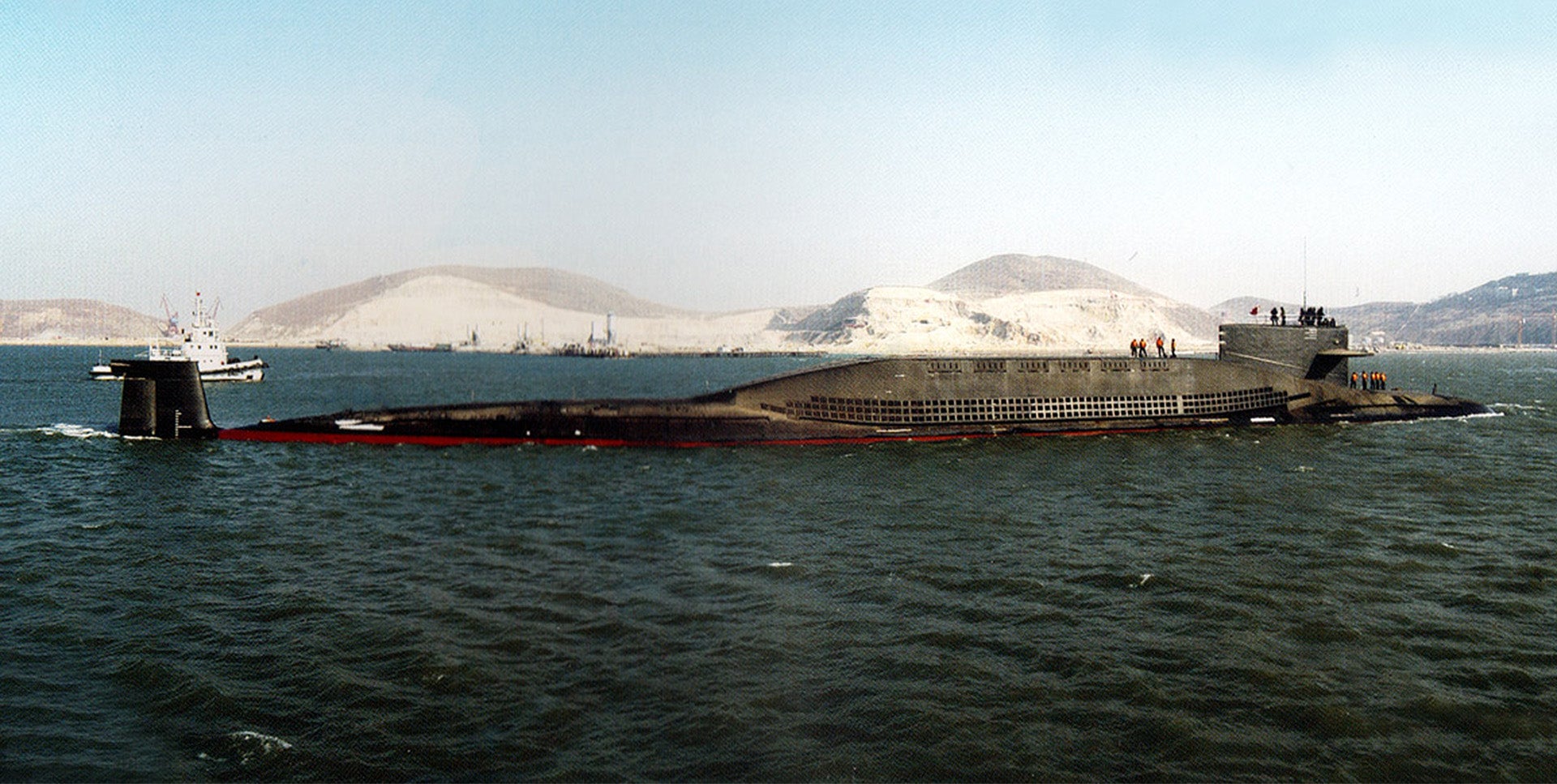With the US announcement that it will begin supplying weapons to Vietnam, rising tensions on the South China Sea, and an almost certain deployment of the Terminal High Altitude Area Defense system in South Korea, it was nearly a certainty that China was going to make a big strategic move. Now, according to a report by the The Guardian, China is poised to do just that by sending their Jin class boomers on nuclear deterrent patrols in the Pacific for the very first time. This comes as the US intelligence services have also predicted that such a patrol would occur this year
There is no doubt that China, which has long acted as a reluctant nuclear player, has become much more militarily assertive over the last decade. Its love for ballistic missiles has also blossomed along with its extra-territorial ambitions, with a seemingly constant flow of new missile types and capabilities being developed for and fielded by PLA forces.
These medium-range and short-range ballistic missile systems, which include anti-ship ballistic missiles (DF-21D), have been largely focused on imposing a regional area-denial and anti-access defensive strategy. A much smaller arsenal of ground-based intercontinental ballistic missiles (ICBMS) of widely varying capabilities (DF-4, DF-5, DF-31, DF-41) makes up the backbone of China’s nuclear deterrent. With this in mind, ranging their ballistic missile submarines far to the east into the Pacific represents a much more threatening strategic capability than anything Beijing has at its fingertips today.
China’s quartet of Type 94 Jin class submarines have been viewed as more of a sea-based deterrent development program than a fully operational capability. They have gone on sporadic regional patrols but these were likely developmental in nature and the boats were most likely unarmed—or at least not fully armed—at the time. Now, if this report is accurate, it would seem that the Jin class and its JL-2 submarine-launched ballistic missiles (each boat carries 12) are ready to conduct an operational long-range deterrent patrol. Such a move will drastically up the ante when it comes to China’s first and second nuclear strike capabilities.

In executing a long-range patrol, the Jin class submarine would leave the relatively crowded and highly surveyed waters of the South China Sea. Although this means it will be operating far from its home at the massive Yulin Naval Base located on Hainan island, a factor that will increase operational risk, its ability to hide in vastness of the Pacific will lend credibility to China’s undersea nuclear strike mission. It would also provide far better survivability should hostilities break out, and most importantly, it would be far closer to targets on the American mainland.
Obviously, monitoring these submarine patrols will be an absolute priority of the US and its allies in the region, a requirement that will only stretch the US Navy’s limited nuclear fast-attack submarine force even more. The Jin class is thought to be nowhere near as quiet as other modern boomers, but that doesn’t mean it can’t disappear—especially in the vastness of the Pacific. At the very least, these boats will tie up incredibly valuable US Navy resources anytime they are on patrol.
China is supposedly slated to receive five Jin class boats in all. This should give them the ability to keep one to two of these boomers on patrol at any given time, and possibly surge a third during times of heightened tensions.

There are rumors that a follow-on boomer development project with significant improvements in acoustic signature and weapons carrying capability is already underway in China. This new design, dubbed the Type 096 will likely present a much more challenging target for American and allied forces to keep tabs on if it becomes operational.
It has taken decades for China to get to this point in its ballistic missile submarine program. Now with territorial disputes in the South China Sea and in the East China Sea, where American allies and America itself are directly opposing China’s will, and the increase in anti-ballistic missile systems in the region, such a change in Beijing’s nuclear posture is almost predictable. This is especially true considering China’s nuclear deterrent is relatively tiny (about 300 warheads) and almost entirely land-based, making it vulnerable to preemptive attack. This strategic vulnerability only increases the necessity of a second-strike nuclear capability, which boomers provide.

China could also move to increase its nuclear weapons stockpile in the near future and is already working to deploy their land-based ICBMs in more creative and survivable ways to avoid destruction during a first-strike scenario. Russia is also executing a similar strategy.
Whether a Jin class boat goes on a long-range deterrent patrol today or a year from now, clearly China is reacting militarily to increasingly hostile relations with the US and its regional allies. The unsettling thing is that with more nuclear weapons forward deployed, the chances for mistakes and accidents only increase. Although China is a much more rational actor, and its submarine technology far more mature than, say, North Korea’s, operational nuclear ballistic missile submarine patrols are still a relatively new concept for the People’s Liberation Army Navy, and that makes the thought of its boomers prowling the Pacific especially concerning.
Contact the author at tyler@thedrive.com
